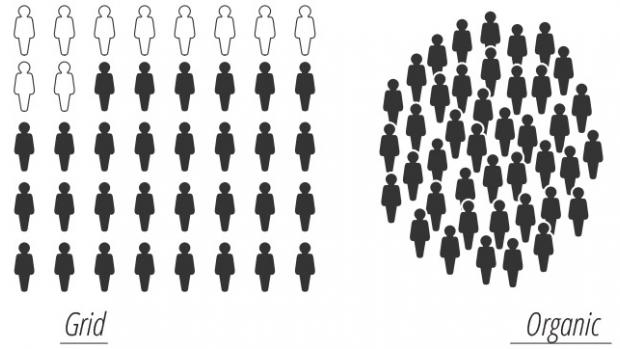Out with Boring Statistics and Charts? Not So Fast . . .
Tandon Researchers Shed Light on a Mistaken Assumption about Presenting Data

Personnel working in the field of human rights sometimes express concern that describing large-scale atrocities using abstract data might create “compassion fatigue” by distancing their readers from the reality of human suffering. Because the information they are disseminating often involves the privacy, security, or safety of entire populations, they cannot simply use identifiable illustrations such as portrait photos to humanize the data — even though photos are known to elicit empathetic responses.
In an attempt to humanize abstract-seeming statistics and figures, designers frequently turn to anthropomorphized graphics — cartoon-like human figures used in place of more conventional pie charts or bar graphs — in an effort to elicit empathy and pro-social behavior.
That strategy is not a particularly successful one according to the paper “Connecting Data with People: Does Anthropomorphizing Visualizations Elicit More Empathy for Human Rights Data?” The paper reports the results of a study conducted by NYU Tandon Professor of Computer Science and Engineering Enrico Bertini, post-doc Jeremy Boy, and graduate student Anshul Pandey, together with Tandon Professor of Technology Management and Innovation Oded Nov and colleagues from NYU’s School of Law, (Margaret Satterthwaite and John Emerson). They examine what they term the “anthropographic assumption,” asserting that while it is widespread, there is no empirical evidence for its efficacy in leveraging public awareness in the pursuit of social change.
In a series of experiments, the researchers, whose work was supported by the MacArthur Foundation, compared various anthropographic designs set in human-rights narratives with a standard chart. Contrary to the anthropographic assumption — and to their expectations — they found that both types of visualizations have very similar effects, suggesting that when the graphics are part of a broader emotive narrative, they can afford to be abstract.
They caution, however, that while anthropographics may not be truly beneficial for eliciting empathy and pro-social behavior, this does not mean they are detrimental, and the area bears further investigation.
“Connecting Data with People: Does Anthropomorphizing Visualizations Elicit More Empathy for Human Rights Data?” was awarded a Best Paper Honorable Mention for being among the top 5 percent of all submissions to the 2017 Association for Computing Machinery’s conference on Computer-Human Interaction (CHI), which received more than 2,400 submissions in total.





